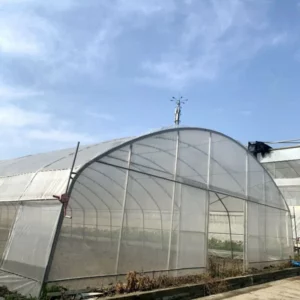The frequency of changing the nutrient solution in an agricultural greenhouse system depends on several factors, including the type of hydroponic system, the stage of plant growth, environmental conditions, and the specific nutrient solution used.
Here are some general guidelines:
- Continuous Flow Systems (e.g., NFT or Drip Systems):
- In these systems, the nutrient solution is continuously recirculated. It’s essential to monitor the nutrient levels regularly and top up as needed to maintain proper nutrient concentrations.
- While the solution isn’t typically changed entirely, it’s recommended to refresh a portion of the solution regularly (e.g., every 1-2 weeks) to prevent the accumulation of salts and maintain optimal nutrient balance.
- Ebb and Flow (Flood and Drain) Systems:
- In Ebb and Flow systems, where the nutrient solution floods the growing medium periodically, the solution may need to be changed less frequently compared to continuous flow systems.
- Depending on factors such as plant growth stage, nutrient uptake, and water quality, changing the nutrient solution every 2-4 weeks is a common recommendation.
- Deep Water Culture (DWC) Systems:
- In DWC systems, where plant roots are submerged in a reservoir of aerated nutrient solution, the solution may need to be changed less frequently due to the high levels of oxygenation.
- It’s typically recommended to change the entire nutrient solution every 2-3 weeks or as needed based on water quality parameters such as pH and EC (electrical conductivity).
- Aeroponic Systems:
- Aeroponic systems, which mist the plant roots with a nutrient solution, require careful monitoring of nutrient levels and pH due to the potential for rapid nutrient depletion.
- Nutrient solution changes may be needed more frequently in aeroponic systems, often every 1-2 weeks or as indicated by monitoring water quality parameters.
- Plant Growth Stage:
- Nutrient solution change frequency may vary depending on the stage of plant growth. For example, China Agricultural Greenhouse supplier plants in the vegetative stage may require fewer nutrient changes compared to those in the flowering or fruiting stage when nutrient demands are higher.
- Environmental Conditions:
- Factors such as temperature, humidity, and light intensity can affect plant growth and nutrient uptake rates, which may influence the frequency of nutrient solution changes.
- Warmer temperatures and higher light levels may increase nutrient uptake and evaporation rates, necessitating more frequent solution changes.
- Water Quality:
- Poor water quality, such as high levels of dissolved solids or contaminants, may require more frequent nutrient solution changes to maintain plant health and prevent nutrient imbalances.
It’s essential to regularly monitor the pH and EC levels of the nutrient solution, as well as observe plant health and growth, to determine the optimal frequency of changing the nutrient solution in your agricultural greenhouse system. Adjustments may be needed based on specific crop requirements and environmental conditions.
